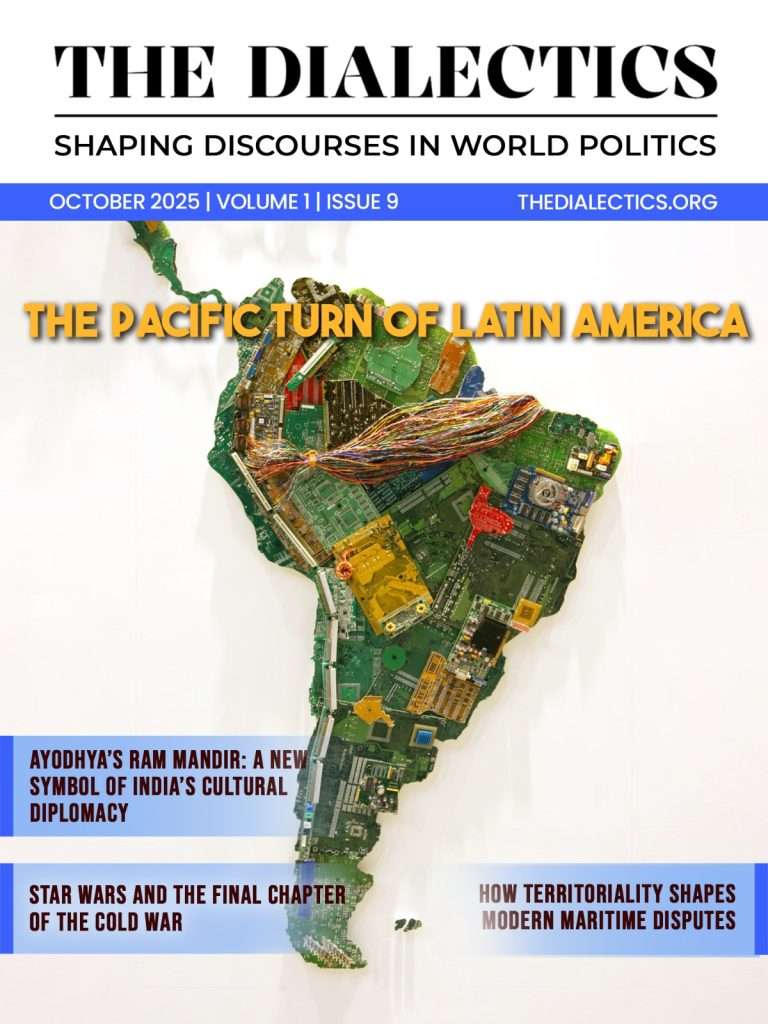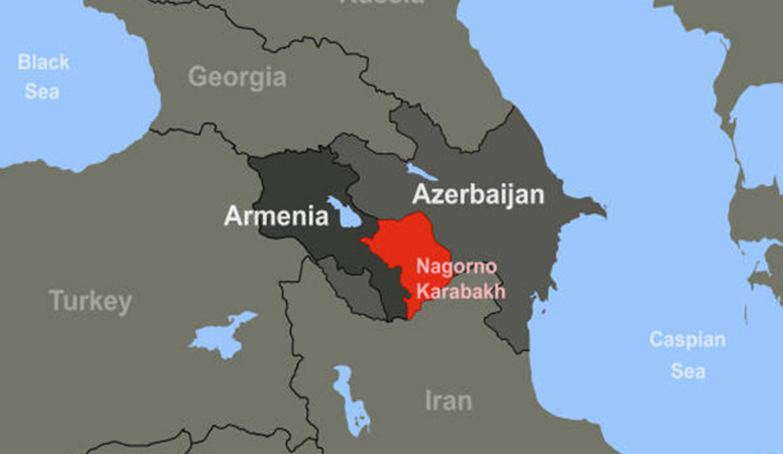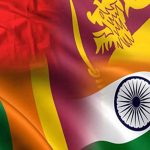A fragile glimmer of optimism has surfaced in the protracted course of rapprochement. On March 13 2025, the draft of the “Agreement on the Establishment of Peace and Interstate Relations between Azerbaijan and Armenia”, comprising 17 provisions along with a preamble, was amicably negotiated between the Republic of Azerbaijan and the Republic of Armenia. However, a comprehensive resolution and ratification remain a distant dream as it still lacks a couple of essential prerequisites that hinder a comprehensive peace deal. Yet, this productive negotiation has marked the inception of a positive stride to unravel the impasse. This impasse stemmed from the contrasting discourses of ethno-territorial claims over the rugged terrain of Nagorno Karabakh (that literally translates as mountainous black garden, which has Russo-Persian Turkic roots), also popular as the Artsakh region of Caucasia. In the contemporary era, the enclave of Nagorno-Karabakh exists firmly within the borders of modern-day Azerbaijan. Their animosity is rooted in their dispute over the province of Nagorno Karabakh and the adjacent regions. This article traces the origins of animosity between Azerbaijan and Armenia over the enclave of Nagorno Karabakh that escalated into a fatal confrontation between them.
Being at the confluence of Asia and Europe, the terrain of the South Caucasus has remained a precious asset throughout the era of empires, from Persians, Ottomans and finally to the Russians in the early 19th century. Around the 1600s, both Armenia and Azerbaijan were under separate occupations where most of Azerbaijan, along with parts of eastern Armenia, was under the occupation of the Persian empire while the Ottomans governed the west of Armenia. By the late 19th century, the Russian occupation of the caucus intensified, and by 1813, the Karabakh Khanate was integrated into the empire. However, the Russian empire collapsed by 1918, and the swathes of the South Caucasus (that comprises modern-day states of Armenia, Azerbaijan, and Georgia) were briefly subjected to collective rule under the Transcaucasian Democratic Federative Republic (TDFR). However, within a month’s time, it fragmented and ascended into three separate republics, i.e. the First Republic of Armenia, the Democratic Republic of Azerbaijan and the Democratic Republic of Georgia, which existed as independent sovereign states till 1920.
Hitherto, shallow skirmishes engulfed Nagorno Karabakh, including other regions like Lori, Javakhk, Nakhichevan and Zangezur, where an overwhelming Armenian populace resided. By 1918, the Azerbaijani forces proclaimed Nagorno Karabakh after their capture of the key town of Shusha and by 1919, an Azerbaijani governor was appointed. In retaliation, the Armenian forces clashed violently with the Azerbaijani forces, which led to the Shusha massacre in March of 1920. Soon after, by the end of 1920 the whole of Caucasia was gobbled up by the Red Army. The Union of Soviet Socialist Republics (USSR) subjugated both Armenia and Azerbaijan and assimilated them as the Armenian Soviet Socialist Republic (Armenia SSR) and Azerbaijan Soviet Socialist Republic (Azerbaijan SSR), respectively.
With the inception of Soviet rule in Caucasia, the Caucasian Bureau of the Communist Party deliberated over the status of Nagorno-Karabakh and in June 1921, initially, it was stipulated that Nagorno-Karabakh along with Zangezur and Nakhichevan would be assigned to Armenia owing to the prevalence of Armenian ethnic populace. However, Joseph Stalin, the then-acting commissar of nationalities, reversed the decision on July 5, 1921, and granted Nagorno-Karabakh to Soviet Azerbaijan and entitled it an autonomous status. Thus, by July 7 1923, the Nagorno-Karabakh Autonomous Oblast (NKAO) was established, and the town of Khankandi (later Stepanakert) was recognized as its administrative centre. However, despite their integration, antagonism prevailed among the autonomous leadership (which was inclined towards Armenia due to their ethnic affinity) and the Azerbaijan SSR. Moreover, with the accession of Mikhail Gorbachev to power and implementation of his Glasnost policy (freedom, openness) ignited a spree of nationalism across the Soviet Union . In August 1987, Karabakh Armenians indicated their preference for uniting with the Armenian SSR. It is believed they secured significant backing from leading Russian liberals and, on February 20, 1988, passed a resolution to secede from Azerbaijan and accede with Armenia SSR. However, Gorbachev refrained from any substantial step, and Nagorno Karabakh remained under Soviet Azerbaijan.
With the dissolution of the Soviet Union in 1991, the conflict escalated into a full-scale confrontation which lasted till 1994. However, since 1988, the clashes between ethnic Armenians residing within Nagorno Karabakh and Azerbaijan became pronounced, particularly after the blockade hosted by Azerbaijan against the autonomous territory of Nagorno Karabakh and in retaliation, Armenia blockaded the Azerbaijani exclave of Nakhchivan. In December of 1991, a victorious referendum was held that marked the establishment of the self-declared Republic of Artsakh. Towards the end of this war, Armenians penetrated deep into Azerbaijan, far beyond Karabakh, which included the surrounding districts of Lachin, Kalbajar, Aghdam, Fuzuli, Jabrayil, Qubadli and Zangilan, thus securing significant buffer territory well within Azerbaijan.
On May 5, 1994, the Bishkek Protocol was negotiated in Bishkek, the capital city of Kyrgyzstan and finally, on May 12, 1994, a ceasefire was brokered by Russia, which demarcated a “line of contact” and concluded the war. Since the conclusion of the ceasefire, Nagorno-Karabakh has been recognized as a de facto independent republic. Moreover, such predatory occupation of Armenia was scrutinized globally and between April 1993 to November 1993, the United Nations Security Council (UNSC) adopted four resolutions (Resolution 822 on April 30, 1993, Resolution 853 on July 29, 1993, Resolution 874 on October 14, 1993, Resolution 884 on November 12, 1993) pertaining to the conflict between Armenia and Azerbaijan which condemned Armenia’s unjust territorial acquisition and reaffirmed Azerbaijan’s territorial integrity. Another attempt to mediate a peace resolution was initiated by the Conference on Security and Cooperation in Europe (CSCE) (later renamed the Organization for Security and Cooperation in Europe (OSCE Minsk) in 1995) in March of 1992, but it failed to reap any resolution.
Though numerous ineffectual attempts were initiated by the OSCE Minsk group, it was only in 2007 that the group proposed a framework for peace i.e. the Madrid Principles which reaffirmed the Azerbaijan’s territorial integrity over the adjacent territories of Nagorno karabakh and included an interim status for Nagorno karabakh and committed to a future referendum to determine the status of Nagorno Karabakh. Nevertheless, both remained wary of each other, which impeded the reconciliation efforts. However, in 2008, a considerable breakthrough was achieved with the signing of the Moscow Declaration, brokered by Russia on November 2 between Armenian President Serzh Sargsyan and Azerbaijani President Ilham Aliyev, which reiterated a peaceful approach to resolve the discord and affirmed the principles of the Madrid declaration. Yet, it did not fetch any substantial peace.
Despite such an uphill momentum towards rapprochement, sporadic confrontation continued, and the clashes crystalized into a full-scale military confrontation in 2016 (i.e. the Four-day war from April 2 to April 5) when Azerbaijan breached its commitment toward a peaceful resolution. It is recognized that despite such an unanticipated attack, Azerbaijan successfully recaptured certain portions of territory from the Artsakh defence army solely because, over the years, Azerbaijan had reinforced its military, with assistance from Turkey and Israel, who equipped Azerbaijan with precision-guided missiles, drones and modern artillery to combat effectively. It was followed by a subsequent cessation on April 5 after Russia brokered a verbal ceasefire among the Heads of Army’s General Staff of Armenian and Azerbaijani. Soon after, with the accession of Armenian Prime Minister Nikol Pashinyan in 2018, he sought to intensify diplomatic contacts with President Ilham Aliyev of Azerbaijan, intending to advance the rhetoric of ‘preparing their populations for peace’.
Paradoxically, on September 27, 2020, the confrontation rekindled into a full-scale escalation that devastated the landscape of Karabakh. Azerbaijan launched a military offensive over the territories that were occupied by Armenian forces since the 1990s and also recaptured a significant portion of Nagorno Karabakh itself. Russia, France, and the United States tried to mediate a ceasefire throughout the month of October, but only after six weeks of deadly confrontation, a ceasefire concluded on November 10 2020, which Russian President Vladimir Putin mediated among Armenian Prime Minister Nikol Pashinyan and Azerbaijani president Ilham Aliyev. Moreover, president Arayik Harutyunyan of Artsakh also bowed to the truce.
This ceasefire noted nine key points which dictated absolute cessation of hostility and directed Armenia to relinquish its control over Agdam, Kalbajar, and Lachin. In addition, 1,960 Russian peacekeepers were deployed along the line of contact and the Lachin corridor (which links Armenia to Nagorno Karabakh) as only a modest fraction of Nagorno Karabakh remained autonomous and indirectly under the control of Armenia. Moreover, Armenia was obliged to ensure connectivity between Azerbaijan and its exclave, Nakhchivan, through the Zangegur corridor. The agreement also stipulated a joint negotiation of Armenia and Azerbaijan along with autonomous authorities of Nagano Karabakh over the status of Nagorno Karabakh. However, Azerbaijan kept on advancing its offensive expansion, which started with the blockading of the Lachin corridor in Dec 2022 under the guise of environmental justification, which hindered the access of humanitarian assistance into Nagorno Karabakh and by Sep 2023 under the pretext of counter-terrorism operation, Baku launched offensive against the Nagorno Karabakh region and diluted the autonomous republic. Hence, the ethnic Armenian enclave was officially dissolved on January 1, 2024.
The de-escalation process and reconciliatory efforts have been brewing since the conclusion of the ceasefire in 2020. Throughout 2021, peace talks were initiated in Brussels, Moscow as well as in Washington, where considerable deliberation was made upon sensitive and complex issues like border demarcation and the status of Nagorno Karabakh.However, substantial progress was initiated by Azerbaijan in February 2022 by proposing the ‘Five Fundamental Principles’ for peaceful resolution. Since then, 15 sessions of deliberations were held to curate the draft of the peace treaty. Moreover, in due course, especially after the recapture and dissolution of the autonomy of Nagorno Karabakh, the context of peace talks gradually inclined towards the normalization of interstate ties and largely focused on building substantial economic ties and reaffirming territorial integrity. And ultimately, on March 13, 2025, Azerbaijan President Ilham Aliyev and Armenian Prime Minister Nikol Pashinyan unilaterally declared their accomplishment over the protracted draft of the peace deal.
The two major contentions that impeded the process till now were their concern over the deployment of third-party forces along the border and their mutual ambiguity over withdrawing the international court cases. Though the clauses of the peace deal may be sorted, yet certain major concerns still lag the ratification and the formal implementation process. Azerbaijan remains stubborn over an essential precondition, i.e. the constitutional amendment of Armenia’s preamble, which notes Nagorno Karabakh’s unison with Armenia (references the declaration of independence of Armenia, signed on August 23, 1990) significantly hinders the territorial integrity of Azerbaijan and it seeks absolute dissolution of the OSCE Minsk group. As of now, both have made sincere attempts to secure a peaceful bilateral agreement. Though much of the antagonism has faded over time, success remains bleak as either perceives a lack of genuine commitment from the other. At this hour, only a robust mutual willingness can sail the resolution to success.




